An RTG crane, or rubber-tyred gantry crane, is a mobile gantry crane, often used in industry or ports, to stack and move heavy loads. RTG cranes are usually equipped with three power generation modes to power the movement of the crane and are supported by rubber tires, which allows it to move easily on paved surfaces without the need for rails or rails. Capable of lifting and moving heavy loads from 10-1000 tons, RTG cranes can be customized to meet different specific needs.
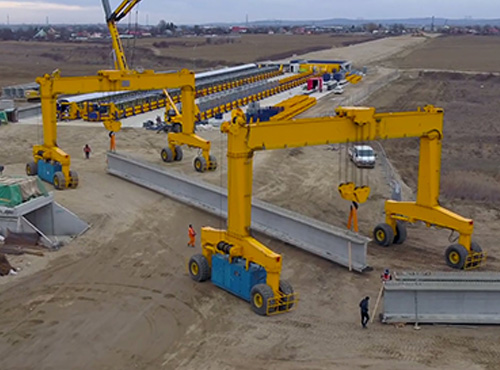
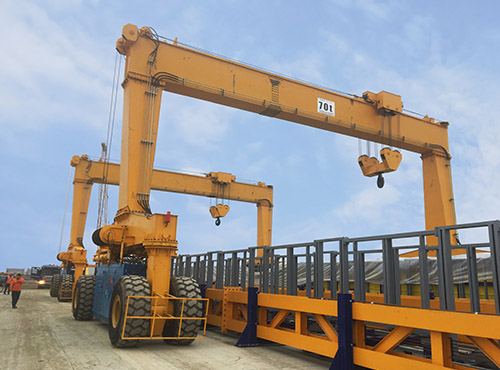
Rubber Tyred Gantry Crane for Industrial
A rubber-tired gantry crane (RTG) is a type of mobile gantry crane used in industrial settings such as container yards, ports, and rail terminals. RTGs are known for their flexibility and maneuverability, as they are capable of moving horizontally and vertically, allowing them to pick up and move containers quickly and efficiently.
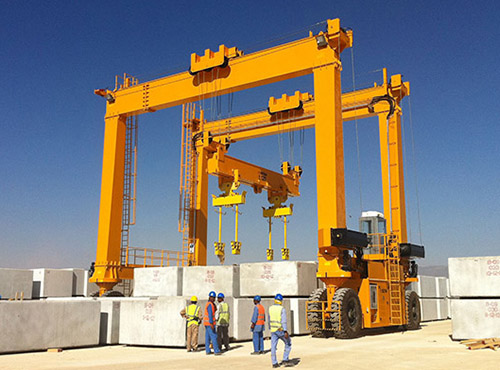
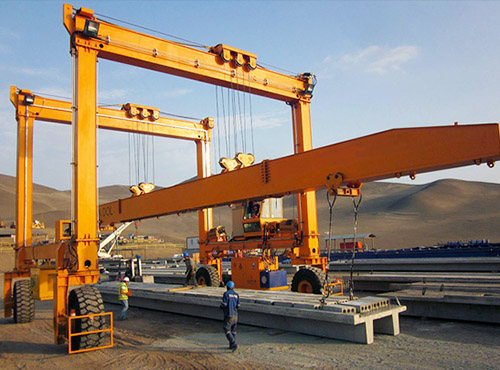
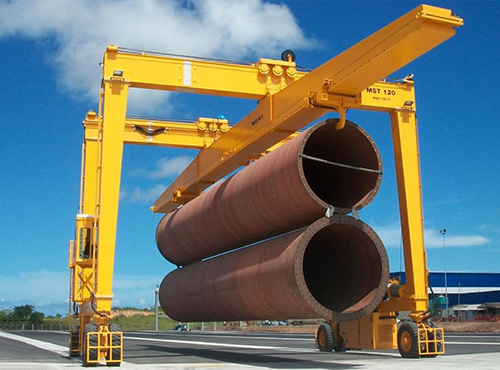
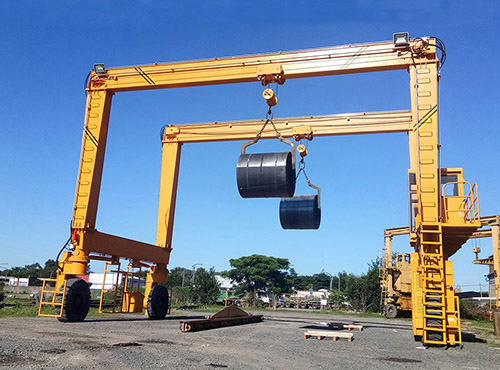
RTGs are typically powered by diesel engines, and they are equipped with rubber tires that allow them to move easily on paved surfaces. The crane is mounted on a gantry, which is supported by four or more rubber tires, and it can be moved in any direction using a control system that operates the wheels independently.
RTGs are often used in container handling operations, where they are used to lift and move shipping containers from trucks and trains onto cargo ships. It can also be used in warehouses and other industrial settings to move heavy objects or equipment.
Overall, the main advantage of using an RTG is its flexibility and mobility. Because it is mobile, it can be used in a variety of different settings, and it can be easily moved to different locations as needed. This makes it an ideal choice for industrial settings where space is limited and equipment needs to be able to move quickly and efficiently.
Rubber Tired Gantry Crane for Containers
A rubber-tired gantry crane (RTG) is a common type of crane used for handling containers in port and intermodal terminal operations. RTGs are typically used to load and unload shipping containers from trucks and railcars, and to stack and move containers in the storage yard.
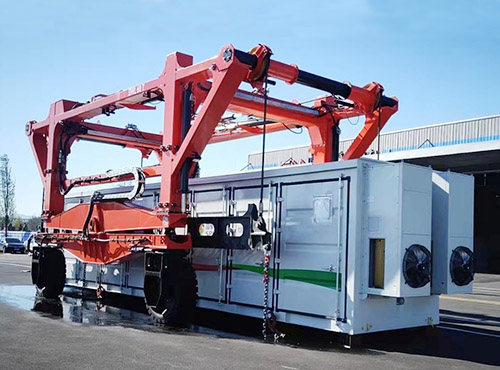
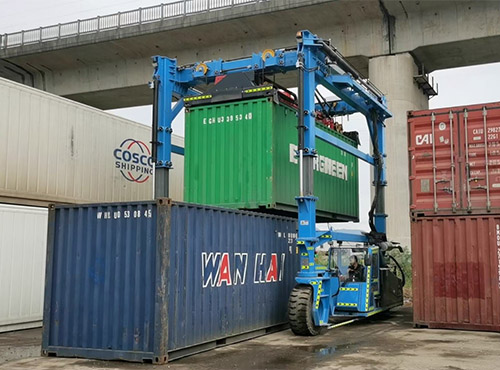
One of the key advantages of using an RTG for container handling is its mobility. Because the crane is mounted on rubber tires, it can easily move around the container yard and position itself for efficient container handling operations. This makes it an ideal choice for container terminals where space is limited and containers need to be moved quickly and efficiently.
RTGs are typically powered by diesel engines, and they are equipped with a spreader or twistlock system that allows them to lift and move containers. The crane operator sits in a cabin or control room and uses a joystick or other control system to operate the crane.
In addition to their mobility, RTGs are also known for their speed and efficiency. They can handle containers quickly and efficiently, allowing container terminals to process large volumes of containers in a short amount of time. This is essential for keeping container shipping operations running smoothly and on schedule.
Overall, the use of rubber-tired gantry cranes for container handling is a common and effective solution for port and intermodal terminal operations. With their mobility, speed, and efficiency, RTGs are a critical piece of equipment for container terminals around the world.
Rubber-Tired Gantry Crane Parts
Rubber-tired gantry (RTG) cranes consist of several components and parts that work together to lift and move containers. Some of the major parts of an RTG crane include:
These are some of the major parts of an RTG crane, but there are also many smaller components and parts that make up the crane. Proper maintenance and regular inspections of all parts are crucial to ensure the safe and efficient operation of the RTG crane.
Rubber-Tired Gantry Crane Specification
Rubber-tired gantry (RTG) cranes are designed to handle containers in port and intermodal yard applications. Here are some common specifications for RTG cranes:
These are some common specifications for RTG cranes. It’s important to carefully evaluate the specific requirements of the application when selecting an RTG crane to ensure that it meets the operational needs and safety requirements of the terminal.
Advantages Of Rubber-Tired Gantry Crane
Rubber-tired gantry (RTG) cranes are a popular choice for container handling operations at ports and intermodal yards. Here are some advantages of using RTG cranes:
Overall, RTG cranes offer a range of advantages for container handling operations, including increased productivity, versatility, and cost-effectiveness, as well as environmental benefits.
Rubber-Tired Gantry Crane Cost
The cost of a rubber-tired gantry (RTG) crane can vary widely depending on several factors, including its lifting capacity, span width, and height, as well as its features and options. Other factors that can affect the cost include the manufacturer, location, and market conditions.
On average, a standard RTG crane with a lifting capacity of 40 to 50 tons can cost between $1.5 million to $2 million. However, the cost can be higher for larger capacity RTG cranes, or those with specialized features, such as automation or remote control capabilities.
It’s important to note that the cost of an RTG crane is not just the purchase price but also includes installation, commissioning, and ongoing maintenance costs. These costs can vary depending on the location and local regulations, as well as the level of support and service provided by the manufacturer or supplier.
In addition to the initial cost, there are also ongoing operating costs to consider, such as electricity, fuel, and labor. These costs can be impacted by factors such as the local energy prices and the level of automation of the crane.
Overall, the cost of an RTG crane can vary widely, depending on several factors. It’s important to consider all costs, including installation, commissioning, and ongoing maintenance, as well as operating costs when evaluating the total cost of ownership of an RTG crane.
Huadelift – Your Reliable Rubber Tyred Gantry Crane Manufacturer
It is essential to choose a reliable and experienced manufacturer when investing in heavy equipment such as a rubber tired gantry crane. This ensures that you get a crane that meets your requirements and is durable enough to withstand heavy usage.
Huadelift has been in the industry for many years and has a good reputation for producing high-quality rubber tyre gantry cranes that meet industry standards. We have a team of skilled engineers and technicians who work hard to ensure that every crane produce is of the highest quality.
In addition, Huadelift offers competitive pricing, which makes us an excellent option for businesses looking to invest in a new rubber tired gantry crane. We also provide excellent customer service and support, ensuring that your crane is installed and maintained properly, and any issues are resolved promptly.
If you’re looking for an efficient, flexible and mobile way to handle heavy loads, Huadelift Industrial Rubber Tire Gantry Cranes are perfect for you! Feel free to contact us for a quote.